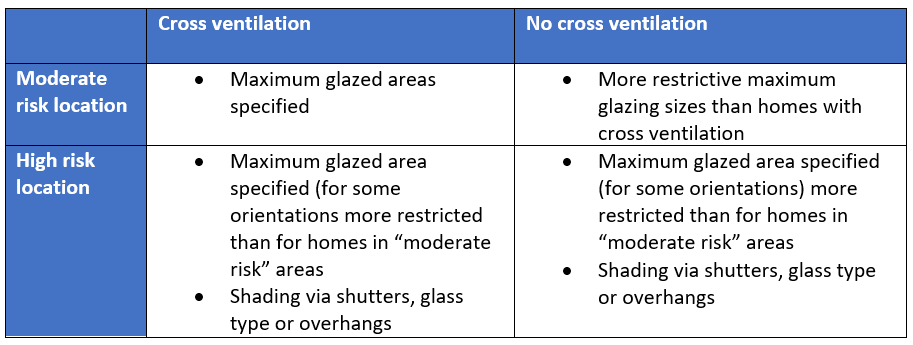At last, building regulations have been updated with the intention of reducing overheating in residential buildings [1]. There is now a different approach to the previous methodology which used historic summer temperatures instead of projected summer temperatures and excluded factors such as hot water services running through corridors and leaking heat.
The approved document states that, “The guidance and regulations are written for the purposes of protecting health and welfare”. Two approaches are available to demonstrate compliance. One method is via dynamic simulation modelling (DSM) which gives builders a wider variety of choices to reduce overheating risk. It also specifies what settings to input into the model and what outputs demonstrate compliance. For example, although it is recognised that tree cover does provide shading, it is not allowed to be used in the modelling. Also, mechanical cooling is only allowed if the developer can demonstrate that cooling via passive means is not possible. DSM will most likely be needed for multi-residential buildings with communal heating systems.
The other approach is called the “simplified approach” where builders must make interventions based on:
- If homes have cross ventilation possibility or not – definitions apply
- If they are being built in a “moderate risk” area or a “high risk” area – as defined by specified post codes
The interventions are aimed at a) limiting solar gains and b) removing excess heat.
Limiting solar gains
The table below summarises the approach

Removing excess heat
Generally, more ventilation or “free area” (i.e., the geometric open area of a ventilation opening) is specified for homes with less cross ventilation and in high-risk areas. The ventilation requirements are likely to exceed those for Part F: Ventilation.
The approved document also has guidance on safety, what to do about noise and pollution, how to stop falls from opened windows and communicating instructions to the occupier via a home user guide.
The “high” risk areas are specified by postcode and are in parts of London and Manchester. The document doesn’t explain how these postcodes were identified. We believe there are other areas of the UK that are at risk of being in an “Urban Heat Island”, particularly high dwelling density areas.
Existing homes
The regulations seem to be a step in the right direction for new build but what about existing homes? As with anything like this, it’s best to start with a risk assessment. Not all the data required for this is typically on asset managers’ databases, but we have developed a methodology that can help identify the 6 main risk factors. Please be in touch if you’d like to know more.
[1] Approved Document: Overheating O, released in December 2021 : https://www.gov.uk/government/publications/overheating-approved-document-o
[2] Photo credit: https://unsplash.com/@alecuffia
